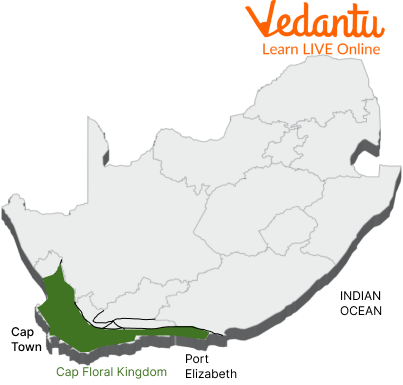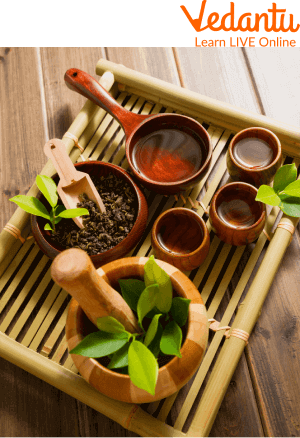




An Overview of the Floral Kingdom
The floral kingdom is also known as the floristic region or floristic kingdom. Plant geographers have recognized a total of six areas around the world, which are exclusive for their plant life. These six regions are: the first is Boreal in North America, Europe, Northern and Central Asia, and North Africa. The second one is Palaeotropical in Africa and Indo-Malaysia. The third one is Neotropical in South and Central America, then in South Africa, Australia, and the Antarctic. The one which is the most isolated is the one in the Australian region, closely followed by the South American Neotropical region. But today, let us throw some light on the Cape Floral Kingdom.

South Africa

Beautiful Floral Region
Cape Floral Region
The Cape Floristic Region is located on South Africa’s southwestern border. It is considered the smallest of the famous six most recognized floral kingdoms of the world. It comprises an area of extraordinarily high diversity. It is not only home to more than 9000 species of plant but it also includes nature reserves, wilderness areas, and national parks.
South Africa’s Cape floral kingdom is considered a hotspot that comprises protected areas in Western and Eastern Cape provinces. The ecological, biological, and evolutionary processes are well conserved by these protected areas.
Fynbos - The Cape Floral Kingdom

Fynbos South Africa
Information
Fynbos is the most delicate ecosystem that exists on earth. It covers around 78555 sq km of area. The Fynbos is an extensive variety of flowering plants that bloom here. One can locate it in some parts of the Western Cape and Eastern Cape in South Africa. This has been on the top list of all the scientists, who are quite impressed with its reproductive strategies. Not only this, but we can also find diversified landscapes, numerous insects and also many predators living here.
Classification of Species
The famous Fynbos families are:
Proteas
Ericas (heaths)
Restios (grass-like)
The most common species like Aloes, Geraniums, and 1400 bulb species of Gladioli can be abundantly found here.
Flowers like Freesias, Agapanthus, Nerines, and Ixia owe their origin to this flower kingdom, and also not to forget the ever-famous and loving Geraniums and Pelargoniums.

Tea Ceremony
Flavours of Fynbos
You will have an amazing time exploring this wonderful place. Not only do you get the explicit view but also get to taste a variety of teas that have been there for the longest period of time.
After a long day of exploring the Cape Town Kingdown, you can sit and relax during the tea ceremony at the Company Garden.
And if you are not a tea person, you can always head to Woodstock and have a lifetime experience of the South African Gin made with so many different flavours like honeybush, rooibos, and buchu.
Getting to Fynbos
The Cape Floral Kingdom is quiet and easily accessible. You can go from either Cape Town or East London.
Cape Town’s international airport is available and offers services throughout the country.
If you want you can also take a train to explore this amazing region.
Now if you want to reach there and view the beauty around you as well, self-drive can also be an option.
And don't miss a guided tour by a local as who better to tell you about the place than a local person.
Best Time to Visit
The best to visit the Cape floral region is early in spring, say between August to September. The reason to visit during this time is that 60% of the flowers in Fynbos bloom during this time and therefore making it the best time to explore this beautiful place.
Interesting Facts
There are many exciting things one can learn about this amazing place. Let us gather some information and learn some interesting facts:
The Cape Floral Region stretches from the Peninsula to the Eastern Cape.
Despite its size, the Cape Floral Kingdom has the widest variety of plants compared to the other floral kingdoms.
The total number of plant species in this kingdom is around 9000.
And around 70 percent of the species are grown only in this region.
Did you know that South Africa is also famous for showcasing a variety of animals other than its vegetation?
Proteas is the national flower of the country.
Threats to the Floristic Region
Even though this world’s famous heritage site is the richest and the smallest of the six floral kingdoms, it is the most threatened as well. Some of the reasons are as follows:
Although it does lead to taking care of species that are facing extinction globally, 15 species per km are in danger of getting extinct.
Frequent fires, afforestation, and urban and agricultural expansion have changed 80 percent of the total landscape.
Summary
Despite being the smallest in the floral kingdom, UNESCO has given the title of World Heritage Site to the Cape Floral Kingdom as it is the only floristic region within a single country. South Africa is a proud owner of the Cape Floristic Region, which has the largest percentage of floral wealth which is native to the country. Because of its unbelievable resources, South Africa claims to be the third highest biodiversity in the whole wide world. From the above article, we can say that the smallest floral kingdom is worth exploring because of its multiple flowering plants and many other gorgeous natural attractions.
FAQs on Floral Kingdom
1. What makes the Cape Floral Region so special?
The Cape Floristic Region has been recognized as one of the most special places in the world in terms of plants because of its diversity, density, and number of numerous species.
2. Can fynbos grow only in South Africa?
It is not entirely true as Fynbos make up about 6.7% of South Africa. Most fynbos can also be found along the coast of the Cape Fold Mountains between Nieuwoudtville and Port Elizabeth.
3. In which biome one would find the highest diversity of plants?
The highest diversity of plants can be found in Tropical Forests. Also, they are the chief productivity of any kind of terrestrial biome.









